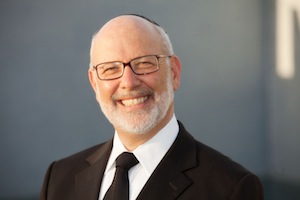The Talmud Tractate, Kidushin, opens with the three actions that transact a legal marriage: Kesef, Shetar and Biah. This is not merely a statement of legalities but also an indication of the three pillars of an ongoing successful relationship: Value (kesef) means material generosity particularly by a man to his wife, documentation (shetar) signifies verbal communication, and intimacy (Biah), refers to a healthy and nourishing physical relationship. A relationship weak in any of these three areas will wobble.
The Talmud extrapolates Kesef from Sedei Efron (the fields purchased by Avraham for the burial of Sarah). We can have a long discussion about the different dimensions of this linkage. But, one dimension jumps out at us from the pages of the torah portion: It’s tragically through the burial of Sarah that Avraham seems to reach the peaks of his passion for a wife whose beauty he never fully recognized in their lifetime. “Aishet Chayil” (woman of valor) was composed by Avraham at his wife’s graveside! The first and only piece of land that Avraham ever possessed in
What is the connection between land, burial and marital passion?
In life, we are mobile. Not only do our minds and imaginations travel, but so do our bodies. We are free to move constantly and continuously. We adventure and we explore. We conquer and we possess. That is the nature of Man: Melech poreitz geder – kings break barriers. But there is another point in the polarity of human existence: home, connectedness, attachment, intimacy. That is the quality of Woman: Kevod bat melech penimah – a princess’ honor is manifest in her home. There is a tension between those
poles: the masculine dynamic of adventure and conquest, and the feminine quality of connectedness and intimacy. In death, those polar dynamics find peace. With the capacity of mobility removed from a person, he has no choice but to connect to one piece of land for the rest of eternity, his grave. It is in the grave that man and woman find a connectedness that is void of all tension. They connect to the land. They connect to each other: the Talmud (in Tractate Bava Batra) talks of an Amorah (sage) who encountered Eliyahu at the entrance to the Me’arat Hamachpeilah. He asked Eliyahu what Avraham was doing at that moment. “He is lying in Sarah’s arms”’ Eliyahu answered, “and she is caressing his head.”
I am not romanticizing death! My point is only that the Mars/Venus tensions between the outward dynamic and the inward one, conquest and mastery vs. connectedness and intimacy, is intrinsic to the lifetime of a successful relationship. Neither of those dynamics can be denied or ignored. Both need to be valued and embraced. When the woman loses her power of intimacy and “home” or the man his drive for conquest, mastery and adventure, the relationship will lack its needed polarity. However, equally when a woman is unable to participate in adventure or a man is unable to engage in intimacy, the relationship is equally doomed. She attracts him inward, he propels her outward. That is the energy of their togetherness.
When Avraham had to find a final resting place for
Only in the grave, when adventure is no longer an option, can man and woman find peace between their opposite forces. In life they are forever energized by the polarity of their living tensions.








